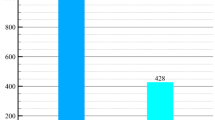Abstract
Psoriasis is a chronic inflammatory disease that significantly affects the patient's living standard. Dermatologists examine the skin lesions visually to determine the condition. Guttate psoriasis, flexural or inverse psoriasis, pustular psoriasis, erythrodermic psoriasis, psoriatic arthritis, etc., are the most common skin conditions affecting people worldwide. Dermoscopic images are used for clinical diagnosis of these conditions, which require a specialized setup with various medical equipment for better understanding. Patients with skin conditions in Pakistan don't bother going to clinics; they might have serious skin conditions. In this study, a light-weighted deep neural network (DNN)-based model has been developed with fewer but learnable parameters. The results obtained with the proposed DNN model have been compared with the state-of-the-art pre-trained models, i.e., Googlenet, InceptionV3, and VGG-19. Benchmarked, publicly available datasets have been used for experiments. The datasets included in the investigation contain RGB images and are converted into YCbCr for better classification. Standard evaluation parameters, i.e., accuracy, specificity, sensitivity, and area under the curve (AUC), have been used to evaluate the proposed DNN-based model. The proposed model for all psoriasis types achieves the best classification performance. The highest one is the case of psoriatic arthritis, where these measures are (accuracy = 99.89%, specificity = 99.08%, sensitivity = 99.0%, and AUC = 0.99). Using the proposed model, it is demonstrated that YCbcr is the best color space for identifying psoriasis and its types.


Similar content being viewed by others
Availability of data and materials
All the datasets used in this paper can be freely downloaded from the homepages of their original authors.
References
Hameed, N., Shabut, A.M., Ghosh, M.K., Hossain, M.A.: Multi-class multi-level classification algorithm for skin lesions classification using machine learning techniques. Expert Syst. Appl. 141, 112961 (2020)
Kassem, M.A., Hosny, K.M., Damaševičius, R., Eltoukhy, M.M.: Machine learning and deep learning methods for skin lesion classification and diagnosis: a systematic review. Diagnostics 11(8), 1390 (2021)
Tan, T.Y., Zhang, L., Lim, C.P.: Intelligent skin cancer diagnosis using improved particle swarm optimization and deep learning models. Appl. Soft Comput. 84, 105725 (2019)
Lauria, G., Hsieh, S. T., Johansson, O., Kennedy, W. R., Leger, J. M., Mellgren, S. I., Nolano, M., Merkies, I. S. J., Polydefkis, M., Smith, A.G., Sommer, C., Valls-Solé, J.: European Federation of Neurological Societies/Peripheral Nerve Society Guideline on the use of skin biopsy in the diagnosis of small fiber neuropathy. Report of a joint task force of the European Fe‐deration of Neurological Societies and the Peripheral Nerve Society. Euro. J. Neurol. 17(7), 903–e949 (2010).
Yadav, N., Alfayeed, S.M., Khamparia, A., Pandey, B., Thanh, D.N., Pande, S.: HSV model-based segmentation driven facial acne detection using deep learning. Expert. Syst. 39(3), e12760 (2022)
Jain, A., Rao, A.C.S., Jain, P.K., Abraham, A.: Multi-type skin diseases classification using OP-DNN based feature extraction approach. Multimedia Tools Appl. (2022). https://doi.org/10.1007/s11042-021-11823-x
Aijaz, S.F., Khan, S.J., Azim, F., Shakeel, C.S., Hassan, U.: Deep learning application for effective classification of different types of psoriasis. J. Healthcare Eng. 2022, 7541583 (2022). https://doi.org/10.1155/2022/7541583
Hosny, K.M., Kassem, M.A.: Refined residual deep convolutional network for skin lesion classification. J. Digit. Imaging 35(2), 258–280 (2022)
Le, N. Q. K., Do, D. T., Nguyen, T.-T.-D., Nguyen, N. T. K., Hung, T. N. K., &Trang, N. T. T.: Identification of gene expression signatures for psoriasis classification using machine learning techniques. Med. Omics, 1, 100001 (2021). https://doi.org/10.1016/j.meomic.2020.100001
Yang, Y., Wang, J., Xie, F., Liu, J., Shu, C., Wang, Y., Zheng, Y., Zhang, H.: A convolutional neural network trained with dermoscopic images of psoriasis performed on par with 230 dermatologists. Comput. Biol. Med. 139, 104924 (2021)
Meienberger, N., Anzengruber, F., Amruthalingam, L., Christen, R., Koller, T., Maul, J., Pouly, M., Djamei, V., Navarini, A.: Observer‐independent assessment of psoriasis‐affected area using machine learning. J. Euro. Acad. Dermatol. Venereol. 34(6), 1362–1368 (2020).
Emam, S., Du, A. X., Surmanowicz, P., Thomsen, S. F., Greiner, R., Gniadecki, R.: Predicting the long-term outcomes of biologics in psoriasis patients using machine learning. arXiv preprint arXiv:1908.09251 (2019).
Hosny, K.M., Kassem, M.A., Fouad, M.M.: Classification of skin lesions into seven classes using transfer learning with AlexNet. J. Digit. Imaging 33(5), 1325–1334 (2020)
Tapak, L., Afshar, S., Afrasiabi, M., Ghasemi, M.K., Alirezaei, P.: Application of genetic algorithm-based support vector machine in identification of gene expression signatures for psoriasis classification: a hybrid model. BioMed Res. Int. 2021, 5520710 (2021). https://doi.org/10.1155/2021/5520710
Funding
Not applicable.
Author information
Authors and Affiliations
Contributions
MSR and GG wrote the main manuscript text, while SN, SC prepared figures. MS made experiments. All authors reviewed the manuscript.
Corresponding author
Ethics declarations
Conflict of interest
All the authors have no competing interests.
Ethical Approval
Not applicable.
Additional information
Publisher's Note
Springer Nature remains neutral with regard to jurisdictional claims in published maps and institutional affiliations.
Rights and permissions
Springer Nature or its licensor (e.g. a society or other partner) holds exclusive rights to this article under a publishing agreement with the author(s) or other rightsholder(s); author self-archiving of the accepted manuscript version of this article is solely governed by the terms of such publishing agreement and applicable law.
About this article
Cite this article
Rashid, M.S., Gilanie, G., Naveed, S. et al. Automated detection and classification of psoriasis types using deep neural networks from dermatology images. SIViP 18, 163–172 (2024). https://doi.org/10.1007/s11760-023-02722-9
Received:
Revised:
Accepted:
Published:
Issue Date:
DOI: https://doi.org/10.1007/s11760-023-02722-9




